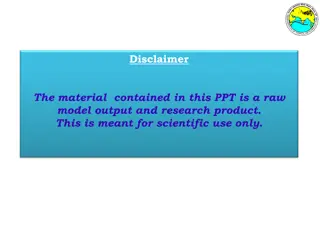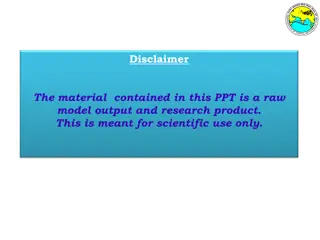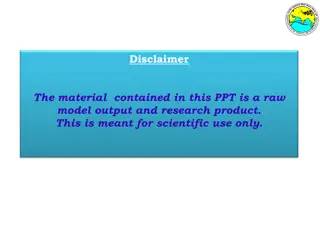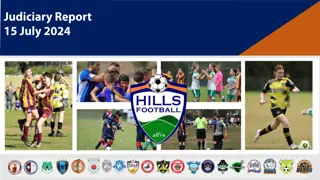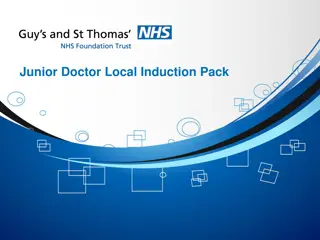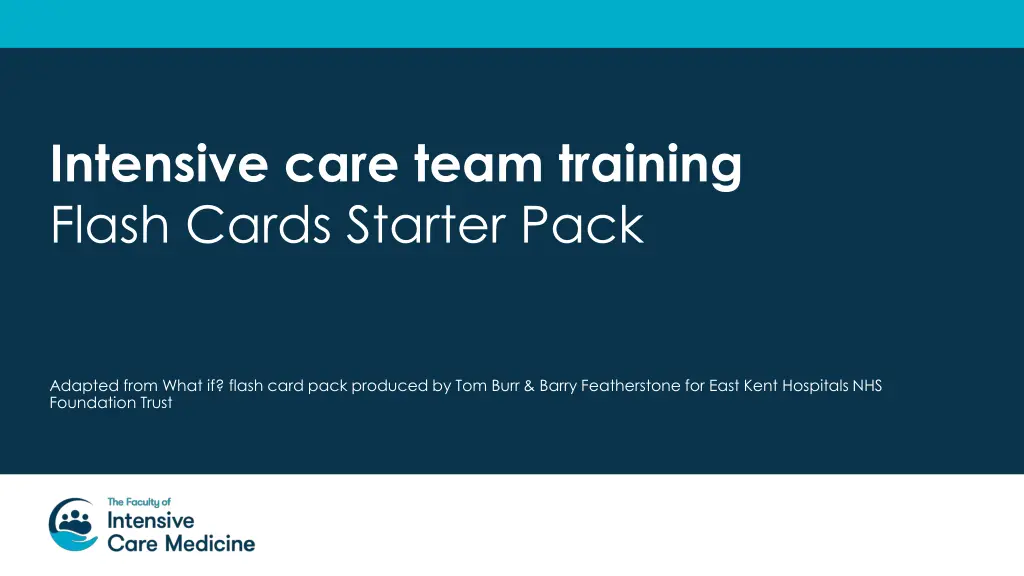
Effective Intensive Care Team Training with Flash Cards
Enhance patient safety through intensive care team training using flash cards. The activity aims to raise awareness of human factors impacting safety. Includes user guide, ground rules, flashcard reader key, the Sheep Model of Human Factors, and a fire alarm scenario.
Download Presentation

Please find below an Image/Link to download the presentation.
The content on the website is provided AS IS for your information and personal use only. It may not be sold, licensed, or shared on other websites without obtaining consent from the author. If you encounter any issues during the download, it is possible that the publisher has removed the file from their server.
You are allowed to download the files provided on this website for personal or commercial use, subject to the condition that they are used lawfully. All files are the property of their respective owners.
The content on the website is provided AS IS for your information and personal use only. It may not be sold, licensed, or shared on other websites without obtaining consent from the author.
E N D
Presentation Transcript
Intensive care team training Flash Cards Starter Pack Adapted from What if? flash card pack produced by Tom Burr & Barry Featherstone for East Kent Hospitals NHS Foundation Trust
User Guide WHY? Preparation and planning helps us manage emergencies together as a team more effectively. The aim of this activity is to use verbal simulation to help raise our awareness of human factors which impact on patient safety. HOW? The team selects a flashcard at random (if the team has already done that flashcard, select another) The flashcard reader is the team member indicated by the colour code - the topic of the emergency scenario is not necessarily linked to the specialty of the reader The team should have a collaborative discussion to answer the questions Any learning points identified by the team should be written on the evaluation form WHEN? Set aside 5 minutes after theatre list safety team brief (huddle) WHO? Where possible ALL team members should remain in the room and participate
Ground Rules Please follow these TEAM rules when running your flashcard simulation as this helps creates an environment for you to learn together No longer than 5 minutes If unsure, ask - no question is a stupidquestion All team members can make a valuable contribution Be civil and polite to each other TIME ENQUIRE ALL INCLUSIVE MUTUAL RESPECT
Flashcard Reader Key Team Member Specialty Doctor Higher Specialty Doctor Nurse Nurse in Charge Consultant Colour Code
Sheep Model of Human Factors HUMAN FACTORS EXAMPLES Care plan,patient pathway, computers, software/ applications (Theatreman, vital pac PACS). Telephones, bleeps, department policies, clinical guidelines, culture, rules. Names, roles, skills, uniforms. Assumptions, distraction, previous encounters, conflict, hierarchy, communication, interruption, mood, morale. Location, availability, fit for purpose, competent to use, serviced and maintained, clean, charged Noise, lighting, temperature, space, contents, design layout, appropriate for task. The Bucket concept working memory is your top 10% of your bucket. Working memory is lost if your bucket over flows Systems Human Interaction Equipment Environment Personal
FIRE ALARM Human Factors: Problem: Systems, Equipment, Environment Halfway through the ward round the fire alarm goes off. There is a smell of smoke in the corridor. Questions: What do you expect to happen? What steps would you take to reduce the risk of harm to the patient/ staff? What equipment maybe required to maintain patient safety and where is it located? What resources might you use to help you in this situation? With regard to managing this situation have you identified any changes which need to be made?
POWER FAILURE Human Factors: Problem: Systems, Equipment, Environment Halfway through the ward round there is a power failure. The ventilators and monitoring remains active, however you cannot see in the dark. Questions: What do you expect to happen? What steps would you take to reduce the risk of harm to the patient/ staff? What equipment maybe required to maintain patient safety and where is it located? What resources might you use to help you in this situation? With regard to managing this situation have you identified any changes which need to be made?
DISTRACTION Systems, Human interaction, Equipment, Environment Human Factors: Problem: You are in the middle of inserting a central venous catheter in a patient whose circulation is relatively unstable. You are interrupted by a colleague who asks for a prescription for some electrolyte replacement. Questions: What are the risks to the patient in this situation? What would you do? How would you give colleague feedback? SBIC (situation, behaviour, impact, change/continue) With regard to managing this situation have you identified any changes which need to be made?
WRIST BAND ERROR ALLERGY STATUS Human Factors: Problem: Systems, Human Interaction You are reviewing a new patient who has been admitted intubated and ventilated last night and notice that the drug chart states ALLERGY TO PENICILLIN. The patient is wearing a white wrist band and the nurse is about to give a dose of IV Co-Amoxiclav to the patient Questions: How would you stop your colleague from giving the antibiotic? CUSS (I am concerned that ,I am unsure whether ,Is it safe ?,STOP!) What would you do to keep the patient safe now and for the future? How might this situation have arisen? With regard to managing this situation have you identified any changes which need to be made?
NEEDLE-STICK INJURY Human Factors: Problem: Systems, Human Interaction When suturing a CVC the registrar has sustained a needle-stick injury. Questions: What steps would you take to reduce the risk of harm to the patient/ staff? What would you do if the surgeon refused to acknowledge what has happened and continues to suture the skin? What resources might you use to help you in this situation? With regard to managing this situation have you identified any changes which need to be made?
OXYGEN SUPPLY FAILURE Human Factors: Problem: Systems, Equipment, Environment When on the ward round the low inspired oxygen warning alarms. You identify a mains oxygen failure. Questions: What do you expect to happen? What equipment is required to maintain patient safety and where is it located? Are you aware of a cognitive aid which may be of help in this situation? With regard to managing this situation have you identified any changes which need to be made?
MAJOR INCIDENT Human Factors: Systems, Equipment Problem: During morning handover you are told your hospital has declared a major incident. Questions: How would you get more information? Where is the major incident plan located? What would be your individual roles in the team for a major incident? How would you manage the rest of your list? With regard to managing this situation have you identified any changes which need to be made?
UNWELL TEAM MEMBER Human Factors: Problem: Human Interaction, Environment, Personal During the day, a staff nurse complains of feeling faint. They subsequently collapse. Questions: What steps would you take to reduce the risk of harm to the patient? How would you allocate roles? How would you contact another surgeon and who else might you contact? With regard to managing this situation have you identified any changes which need to be made?
POST-OPERATIVE BLEEDING Systems, Human Interaction, Equipment, Environment Human Factors: Problem: Not long after the patient gets admitted into the intensive care unit after a Whipple s procedure, you notice one of the fluid bags attached to a Robinson drain filling up with fresh blood. Questions: How would you alert the rest of the team? How would you collect blood products? How would you get help from a surgeon? What other tasks might the team need to perform to stabilise the patient? With regard to managing this situation have you identified any changes which need to be made?
CARDIAC ARREST Systems, Human Interaction, Equipment, Environment Human Factors: Problem: There is a cardiac arrest in the bay next to you on the unit. Questions: What initial steps would you take as a team? Which roles would each team member take? How would you get help if needed? What additional resources would you need that are not already in the intensive care unit? With regard to managing this situation have you identified any changes which need to be made?
HYPOXIA Systems, Human Interaction, Equipment, Environment Human Factors: Problem: When reviewing a new patient you have taken over, the patient looks blue and the oxygen saturations read 70% on the monitor. Questions: What would you do? What equipment do you need to help in this situation? How would those aware of the problem tell the rest of the team? What could aid your decision making as a team? With regard to managing this situation have you identified any changes which need to be made?
MACHINE ALARM Human Factors: Problem: Human Interaction, Equipment, Environment After re-positioning the patient after a roll. The high airway pressure alarm on the ventilator is sounding. Questions: What would you do? If the problem gets worse or persists how would you call for help? What equipment do you need and where would you access it from? With regard to managing this situation have you identified any changes which need to be made?
LOW BLOOD PRESSURE Human Factors: Problem: Systems, Human, Interaction Equipment You have been asked to review a patient with low blood pressure. The cause of the hypotension is not immediately clear. Questions: How would you manage this problem? How would you establish the cause of hypotension? How would you decide on treatment options in order to stabilise the patient s blood pressure? DODAR (Diagnostics/ Options/ Declare decision/ Allocate Roles/ Review With regard to managing this situation have you identified any changes which need to be made?
LOW HEART RATE Systems, Human Interaction, Equipment, Environment Human Factors: Problem: The patient heart rate suddenly drops to 25 beats per minute during suctioning. Questions: How would you respond as a team? Which drugs might be needed are they immediately available? If the problem persists, how do you decide whether to continue surgery? If the patient required external pacing, where would you access a defibrillator with pacing functionality? With regard to managing this situation have you identified any changes which need to be made?
FAST HEART RATE Human Factors: Systems, Equipment, Environment Problem: Overnight the patient s heart rate increases to from 110 to 180 beats per minute. You confirm they are adequately sedated but the tachycardia persists. Questions: What would you do? How would you establish a cause of the tachycardia? DODAR (Diagnostics/ Options/ Declare decision/ Allocate Roles/ Review Which protocol might help you manage this emergency? What would you do if DC cardio-version was indicated? With regard to managing this situation have you identified any changes which need to be made?
ALLERGIC REACTION Systems, Human Interaction, Equipment, Environment Human Factors: Problem: After administrating a new antibiotic the tidal volumes reduce and the patient becomes severely hypotensive and tachycardic. You suspect anaphylaxis. Questions: How would you manage this emergency? Which drugs may be required and where are they located? Where is the anaphylaxis box stored? If you were unsure of your role in this emergency what would you do? With regard to managing this situation have you identified any changes which need to be made?
LOCAL ANAESTHETIC TOXICITY Systems, Human Interaction, Equipment, Environment Human Factors: Problem: A post operative patient who has a wound catheter with a local anaesthetic being administered through an automated pump. They suddenly go into VT. You suspect local anaesthetic toxicity. Questions: How should the team manage this? What would your individual roles be in this emergency? Which drug is specifically used to treat this problem and where is it located? With regard to managing this situation have you identified any changes which need to be made?
CARDIAC EVENT Systems, Human Interaction, Equipment, Environment Human Factors: Problem: You notice that the patient is developing marked ST segment elevation on the monitor. Questions: What is the concern? What steps need to be undertaken as a team to establish the diagnosis? What resource could help guide your decision making? If the patient needed intervention in the cardiac catheter suite, how would you arrange this? With regard to managing this situation have you identified any changes which need to be made?
POST CARDIAC ARREST CARE Human Factors: Systems, Equipment, Environment Problem: A patient on the unit has a cardiac arrest on the intensive care unit shortly after admission. Following 3 cycles of CPR there is ROSC (Return Of Spontaneous Circulation). Questions: What would you do next? Who would you call for help? How and when would you conduct a team debrief? With regard to managing this situation have you identified any changes which need to be made?
SEPSIS Systems, Human Interactive, Equipment, Environment Human Factors: Problem: A patient is admitted onto the intensive care unit and is in septic shock. They are brought into the unit and needs central venous access. Questions: What are your priorities in managing the patient? What resource could you use to help with your decision making and guide your management? How would you ensure effective teamwork and delegation of tasks? The consultant wants you to finish the ward round but you feel you need to manage this patient first how do you resolve this issue?
AIRWAY CRISIS Human Factors: Problem: Systems, Human Interaction Equipment An attempt to intubate a patient fails, you follows to the DAS algorithm. Plan A, B and C fail and you declares a Can t Intubate, Can t Oxygenate scenario Questions: How should this situation be managed? What equipment (including guidelines) is/are needed to manage this life- threatening emergency? Where is the equipment located? How could a non-airway trained team member be useful in this situation? With regard to managing this situation have you identified any changes which need to be made?
THROMBOEMBOLIC EVENT Human Factors: Systems, Equipment, Environment Problem: A patient with a high clotting risk and being bridged on heparin arrives from theatres. Soon after admission they desaturate. The registrar assesses the patient and suspects a pulmonary embolism. Questions: What would you expect to happen next? What equipment is required that is not immediately available in theatre? When senior help is called 4 anaesthetists arrive to offer help how do you allocate roles? With regard to managing this situation have you identified any changes which need to be made?
CHALLENGING RELATIVE Human Factors: Problem: Systems, Human Interaction, Environment An anxious patient on your unit has insisted that their relative is present at the bedspace. After visiting hours are over, they refuse to leave the intensive care unit. Questions: What would you do? How do you ensure the safety of the patient and the staff around you? How would you contact security if the need arose?. With regard to managing this situation have you identified any changes which need to be made?
Flash card evaluation survey Date: Unit: Team members present at flash card simulation (please tick): Nurse Nurse in Charge Higher Specialty Doctor Specialty Doctor Consultant Physiotherapist Other Flash card title: Has your team identified any changes that need to be made following this flash card exercise? (list up to 3) 1. 2. 3. Please use the QR code to let us know how this can be improved



![Guardians of Collection Enhancing Your Trading Card Experience with the Explorer Sleeve Bundle [4-pack]](/thumb/3698/guardians-of-collection-enhancing-your-trading-card-experience-with-the-explorer-sleeve-bundle-4-pack.jpg)




